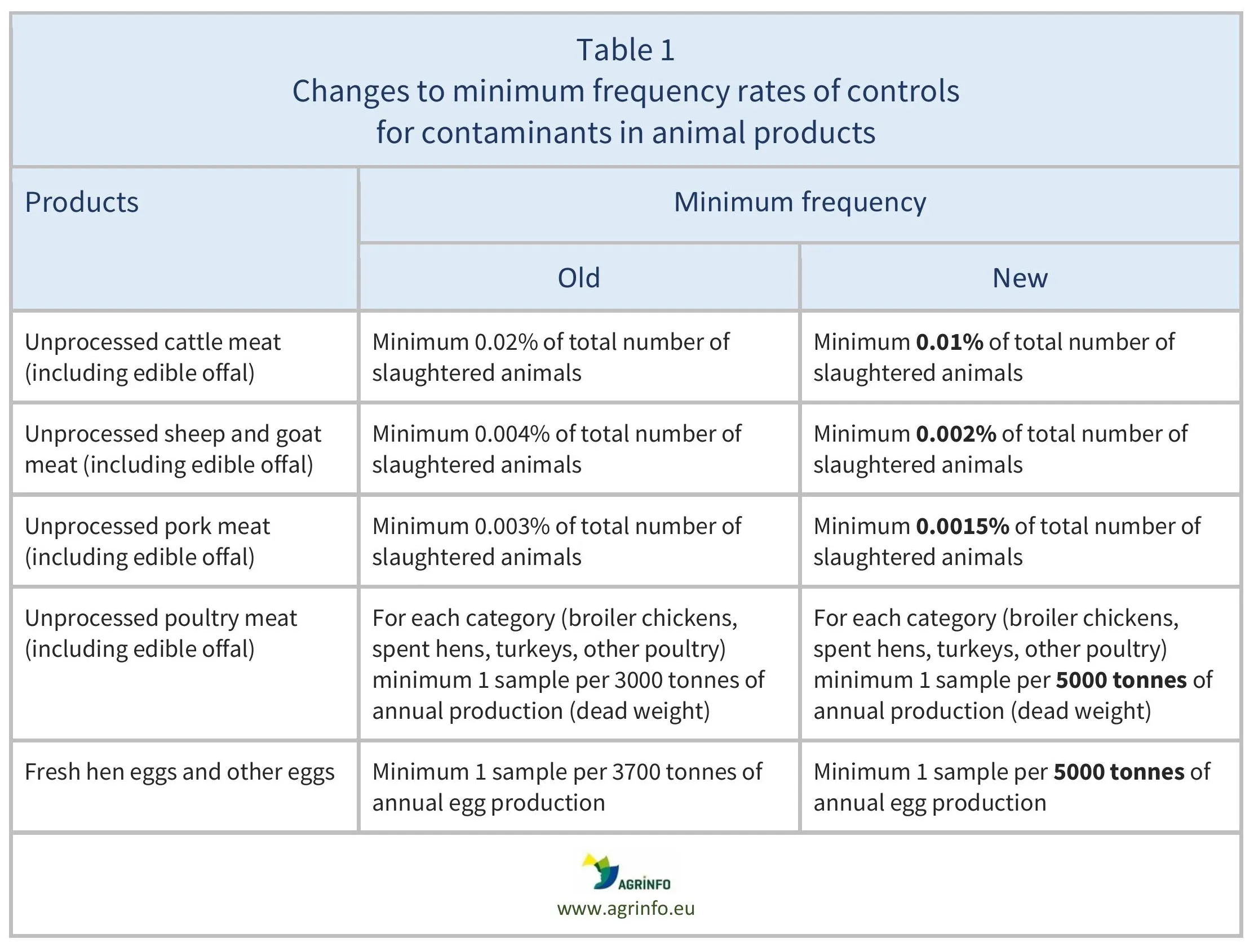Minimum frequency of controls for contaminants in certain animal products
- Contaminants
- Food safety
Summary
The European Union (EU) has lowered the minimum frequency of controls for contaminants that must be carried out by EU official controls of beef, lamb, sheep, goat meat, poultry meat, and eggs. This is based on recent data resulting from official controls of contaminants.
EU lowers minimum frequency of official controls for contaminants in certain animal products.
Commission Implementing Regulation (EU) 2025/2246 of 7 November 2025 amending Implementing Regulation (EU) 2022/932 as regards minimum control frequencies.
Update
The European Union (EU) has lowered the minimum frequency of controls for contaminants that must be carried out by EU official controls of beef, lamb, sheep, goat meat, poultry meat, and eggs. This is based on recent data resulting from official controls of contaminants.
Impacted Products
Beef, lamb, sheep, goat meat, poultry meat, eggs
What is changing?
For unprocessed beef, lamb, sheep, goat meat, poultry meat, and eggs, the minimum frequency of official controls for contaminants has been lowered to the rates set out in Table 1.
In addition, it is no longer required to perform controls for metals in fresh hens’ eggs and other eggs.
Why?
The latest data gathered by EU Member States show that there is a low risk of non-compliance with the rules relating to the presence of contaminants in relation to unprocessed beef, lamb, sheep, goat meat, poultry meat, and eggs. The frequency of controls is based on risk, and is therefore lowered.
Timeline
The revised rules apply from 1 January 2026.
What are the major implications for exporting countries?
To be in the list of non-EU countries authorised to export food of animal origin to the EU (Regulation 2021/405, Annex-I), non-EU countries must submit an updated control plan every year by 31 March. Exporting countries’ annual control plans should take into account the new minimum frequency of controls. The European Commission updated its Guidelines on control plans in September 2025.
Background
Regulations 2022/931 and 2022/932 provide specific rules for official controls of contaminants in animal products and composite products. Competent authorities of countries exporting to the EU must submit a risk-based control plan to the European Commission that demonstrates how they comply with EU legislation for contaminants in food.
Resources
European Commission (2025) Guidelines on EU requirements for entry of animals and products of animal origin – Control plans for residues of veterinary medicines, pesticides and contaminants.
Commission Implementing Regulation (EU) 2022/932 on uniform practical arrangements for the performance of official controls as regards contaminants in food, on specific additional content of multi-annual national control plans and specific additional arrangements for their preparation.
Sources
Commission Implementing Regulation (EU) 2025/2246 amending Implementing Regulation (EU) 2022/932 as regards minimum control frequencies.
Disclaimer: Under no circumstances shall COLEAD be liable for any loss, damage, liability or expense incurred or suffered that is claimed to have resulted from the use of information available on this website or any link to external sites. The use of the website is at the user’s sole risk and responsibility. This information platform was created and maintained with the financial support of the European Union. Its contents do not, however, reflect the views of the European Union.
EU lowers minimum frequency of official controls for contaminants in certain animal products.
Commission Implementing Regulation (EU) 2025/2246 amending Implementing Regulation (EU) 2022/932 as regards minimum control frequencies.
What is changing and why?
The European Union (EU) has lowered the minimum frequency of official controls for contaminants in unprocessed beef, lamb, sheep, goat meat, poultry meat, and eggs to the rates set out in Table 1.
In addition, it is no longer necessary to perform controls for metals in fresh hens’ eggs and other eggs.
Timeline
The revised rules apply from 1 January 2026.
Disclaimer: Under no circumstances shall COLEAD be liable for any loss, damage, liability or expense incurred or suffered that is claimed to have resulted from the use of information available on this website or any link to external sites. The use of the website is at the user’s sole risk and responsibility. This information platform was created and maintained with the financial support of the European Union. Its contents do not, however, reflect the views of the European Union.

